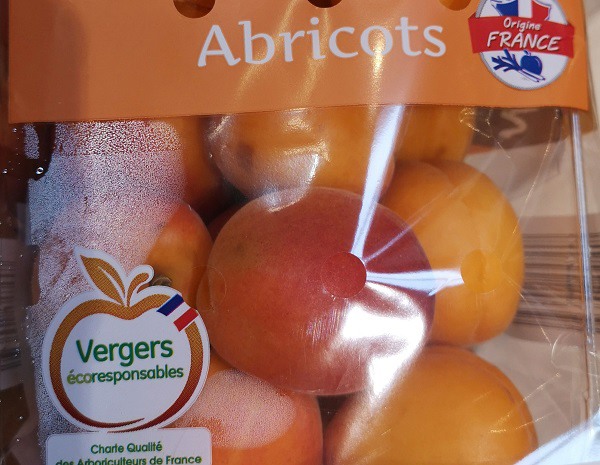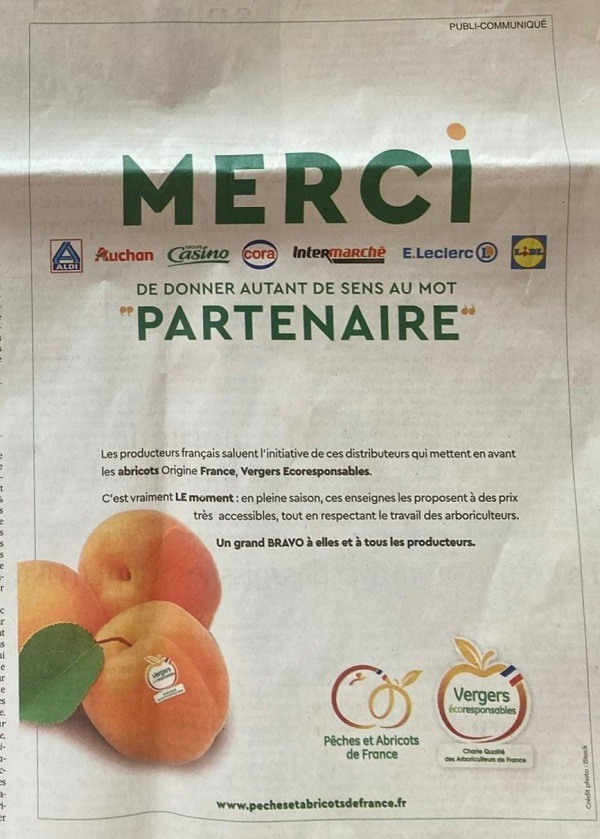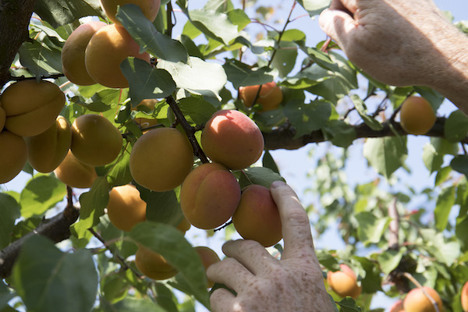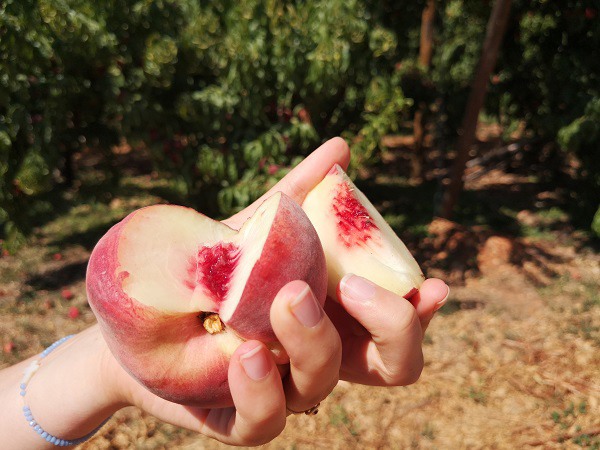The summer has come to an end, along with the stone fruit campaign. The organization of producers Peaches and Apricots of France has given an overview of this somewhat “unusual” campaign. While 2023 turned out to be “rather satisfactory” for nectarines and peaches, French apricots experienced a much more “mixed campaign”.
“Mixed” apricot campaign
Early in the season, many hail storms affected farms in the Bouches-du-Rhône, Gard and Drôme regions, but these losses were largely offset in France, thanks to the late spring weather conditions. Figures will have to be confirmed, but the harvest volumes were almost 25% higher than last year (harvest forecasts for France stood at 125,000 tons at the end of April). Although the rains in May saved part of the harvest, “they nevertheless weakened the fruit in the first part of the season. We had to wait until the end of June to see a more satisfactory production, as the market opened under complicated technical conditions, with fruit of very heterogeneous quality and damage from the hail storms.”

As a reminder, the estimated European harvest was 500,000 tons, slightly below potential due to losses in Emilia-Romagna. Spain and France maintained their potential, thanks to the rainfall in May, which warded off the drought.
On the market, “the production peak” between late June and mid-July was “difficult to absorb”, due to the “fierce competition from Spain", and the complicated economic situation: low purchasing power, urban violence and bad weather. Both producers and distributors therefore decided to “join forces” in order to boost sales and “clean up the market”. Numerous promotional actions were organized “with significant price concessions agreed by producers, central purchasing agencies and numerous retailers.”
 Two advertisements in French newspapers have highlighted the partnership between professionals of the sector, prompting distributors to promote the “French origin” at attractive prices for consumers and therefore boosting sales. A communication campaign was also organized by Interfel to encourage consumption at a time of acute crisis. This general mobilization has enabled us to rapidly reduce stocks,” explains Raphaël Martinez.
Two advertisements in French newspapers have highlighted the partnership between professionals of the sector, prompting distributors to promote the “French origin” at attractive prices for consumers and therefore boosting sales. A communication campaign was also organized by Interfel to encourage consumption at a time of acute crisis. This general mobilization has enabled us to rapidly reduce stocks,” explains Raphaël Martinez.

The organization of producers continues to work on its “Apricot Quality Plan”, launched in 2019, with 2 axes: varietal lists to help producers choose varieties with high taste potential, and the apricot quality indicator to determine the quality potential of batches when they are packed at the shipping station. This work is necessary because “when the quality of our fruit is irregular, it is difficult to recruit new consumers and encourage repeat purchases.”
“Fairly satisfactory results” for French peaches and nectarines
French peaches and nectarines did not have many quality problems this year. “The season started later than for apricots, so they were less affected by bad weather at harvest time. Thanks to “regular sunshine”, the quality of the fruit was regular and good. “Only the storms in mid-August, following a heatwave, weakened the fruits for about 2 weeks at the end of the season.”
 Much like for the apricots, the rains in May put an end to the uncertainties about the risk of drought. With normal production levels in Spain, the European supply probably exceeded 2,600,000 tons, which is almost 300,000 tons more than last year.
Much like for the apricots, the rains in May put an end to the uncertainties about the risk of drought. With normal production levels in Spain, the European supply probably exceeded 2,600,000 tons, which is almost 300,000 tons more than last year.
The peach and nectarine market was tight but did not “crack” this year. Despite a difficult economic context and unfavorable weather conditions for consumption in northern and western France, the market “remained relatively balanced. A real feat because large volumes from Spain have been competing with the French production since the start of the season. However, despite significant tensions, a steady flow of sales was maintained this year, and the return of nice weather ensured a great demand on the market until the last few days.”
French flat fruit production is expected to grow
Spanish flat peaches still significantly limit the presence of French flat peaches on the shelves, but the demand for this segment is strong in France, so French production should gradually increase. Some producers have already taken the plunge (France currently produces 5,000 tons), and others may soon follow. The only downside is the higher production costs in France, compared to Spain. “French production will only be able to compete with Spanish flat peaches occasionally, because in addition to its low price positioning and taste qualities, Spain produces large volumes. There is also no guarantee that retailers will want to replace the Spanish product with the more expensive French flat peaches. Hopefully, factors such as the origin, environmental values and carbon sequestration in the orchards will work in favor of the French fruit.”
A new feature expected for the end of 2023 is the fact that Spanish flat peaches will now be counted separately. “Until now, flat fruit was not differentiated from round fruit, but we will now be able to know how many we import each year.”
For more information:
Raphaël Martinez
AOP Pêches et Abricots de France
Phone: +33 (0)6 09 98 38 09
direction@aop-pechesabricots-france.com
